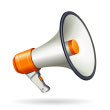SCDigest
Editorial Staff
| SCDigest Says: |
 The research actually ended its testing at the 30 meter distance. It is quite possible the signals can effectively travel even further than that. The research actually ended its testing at the 30 meter distance. It is quite possible the signals can effectively travel even further than that.

Click Here to See Reader Feedback |
A summary of top stories in RFID for the past week.
Who Would Have Guessed? Ventilation Ducks at Least Triple RFID Signal Distance, Opening Up New Applications for Building Management
In a just released paper in the proceedings of the IEEE, researchers at North Carolina State University have summarized a study that showed various ventilation ducts for heating and cooling systems in buildings can at least triple the distance passive UHF RFID tags can be read.
The study found that the typical passive UHF tag read rate range of 5-10 meters can be extended to as much as 30 meters (about 27 yards) because the RFID signals do not disperse or breakdown in the duct work anywhere near as rapidly as they do in free air space.
The research actually ended its testing at the 30 meter distance. It is quite possible the signals can effectively travel even further than that.
The research is probably most useful when considering combining RFID tags that pinpoint a specific location in the building with a variety of sensors, such as temperature, light, etc. By using the ducts, it could be possible to have a centralized reader system connected over fairly long ranges to tags at the end of the ducts, eliminating the need to wire the readers throughout the building. The tag/sensor combo could be placed at the end of the duct, or elsewhere in the room with an antenna at the end of the duct work.
The technology may also have significant applications for health and safety monitoring. “This would work with anything you can create an electronic sensor for,” says Dr. Dan Stancil, co-author of the study paper and professor and head of NC State’s Department of Electrical and Computer Engineering. The new insight could open the door to RFID tag smoke detectors, carbon-monoxide monitors, or sensors that can detect chemical, biological or radiological agents.
“Because you can tap into existing infrastructure, I think this [RFID-based] technology is immediately economically viable,” Stancil adds. “Avoiding the labor involved with installing traditional sensors and the related wiring would likely more than compensate for the cost of the RFID tags and readers.”
Not said, but for distances of longer than 30 meters (if that is about the limit), signal repeaters inside the duct work could be used to extend the range.
RFID Privacy Battle to be Waged Over School Children, some Worry
The concern of potential privacy concerns over RFID technology will probably never end - and maybe rightfully so.
Much attention is now being placed on early efforts around the globe to track school children using RFID technology.
Schools in Japan, the UK, and other countries have been conducting trials for RFID tracking of students for several years. Now, such a system is set to be tested in Contra Costa County, California, where preschoolers will be given a jersey to wear with a RFID inside, allowing school staff to know a child's exact position in the building in real-time, and track movement paths of each child as well.
That has many privacy advocates worried that such systems will usher in a new wave of RFID-based technology that will give governments and others never yet seen levels of monitoring and control capabilities of US citizens.
Blogger Aaron Saenz is one such concerned observer, a bit unusual in that he seems just fine with using RFID to track inventories in the supply chain.
This RFID-Auto ID Story is Continued Below
|